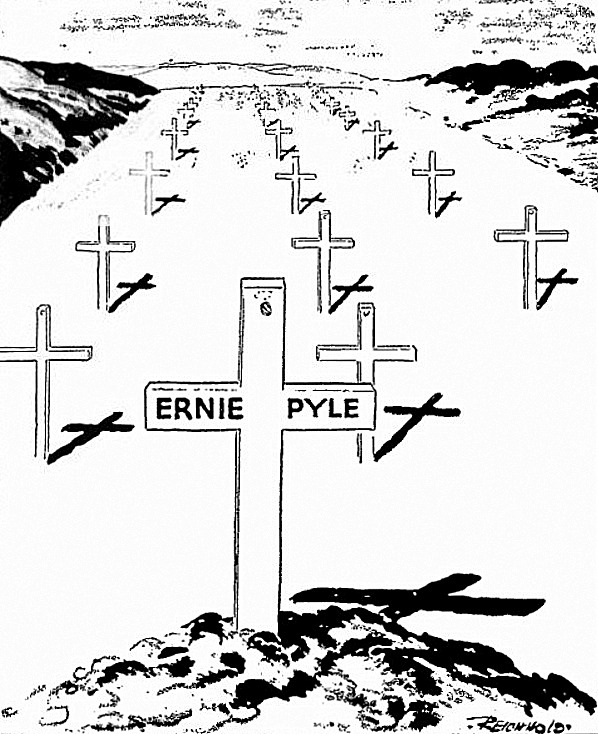Supreme HQ Allied Expeditionary Force (April 19, 1945)
FROM
(A) SHAEF MAIN
ORIGINATOR
PRD, Communique Section
DATE-TIME OF ORIGIN
191100B April
TO FOR ACTION
(1) AGWAR
(2) NAVY DEPARTMENT
TO (W) FOR INFORMATION (INFO)
(3) TAC HQ 12 ARMY GP
(4) MAIN 12 ARMY GP
(5) AIR STAFF MAIN
(6) ANCXF
(7) EXFOR MAIN
(8) EXFOR REAR
(9) DEFENSOR, OTTAWA
(10) CANADIAN C/S, OTTAWA
(11) WAR OFFICE
(12) ADMIRALTY
(13) AIR MINISTRY
(14) UNITED KINGDOM BASE
(15) SACSEA
(16) CMHQ (Pass to RCAF & RCN)
(17) COM ZONE
(18) SHAEF REAR
(19) SHAEF MAIN
(20) HQ SIXTH ARMY GP
(21) WOIA FOR OWI WASHINGTON FOR RELEASE TO COMBINED U.S. AND CANADIAN PRESS AND RADIO AT 0900 HOURS GMT.
(REF NO.)
NONE
(CLASSIFICATION)
IN THE CLEAR
Communiqué No. 376
UNCLASSIFIED: All organized resistance in the Ruhr Pocket has ceased and Allied forces have virtually completed mopping up the last enemy stragglers in this area.
In Holland, our forces advancing from the Arnhem area have occupied Wageningen and Ede and reached the Zuider Zee north of Barneveld.
West of the Ems River near its mouth, and around our bridgehead over the Küsten Canal the enemy is offering stiff resistance.
Beyond the Aller River, Verden and Soltau have been captured and our columns advanced ten miles north of Schneverdingen. Uelzen, now almost cleared of the enemy, has been surrounded and we advanced north of the town to the outskirts of Lüneburg, and east to Rosche.
Our units attacking south into the Harz Mountains gained two to four miles. Magdeburg has been cleared to the Elbe River. In the bridgehead across the Elbe, we repulsed two small counterattacks.
We entered Leipzig from the west with infantry and tanks and reached the west bank of the Elster Canal. In the Chemnitz area our units encountered small arms and bazooka fire at Auerswalde.
Our infantry gained up to 12 miles on a 14-mile front in the Zwickau area and Zwickau and Lengenfeld have been cleared. We met strong resistance at Lengenfeld from dug-in tanks and infantry.
South of Lengenfeld we cleared Treuen. East of Zwickau we reached the vicinity of Wildenfels and cavalry elements are near Thierfeld.
Farther south we reached the vicinity of Sachsgrün and our patrols advanced six miles east, crossed the Czechoslovakian border, and reached Gottmannsgrün.
South of Hof we entered Schwarzenbach and Weissenstadt.
In Nuremberg, our units which entered from the north and from the east joined, and other elements drove into the city from the south. Resistance decreased as we knocked out enemy gun positions. The suburb of Furth and a nearby airfield were captured.
South of Nuremberg we reached Schwand, and to the west, Ansbach has been largely cleared. Farther west towards Heilbronn we reached Jochsberg, Westheim and Grab.
South of Pforzheim we reached Horb, on the upper Neckar River. Freudenstadt, communications center in the Schwarzwald Forest, was captured and the advance extended five miles farther south.
In the Rhine Plain, our units pushed as far south as Dinglingen. Enemy resistance in Oberkirch was overcome and long-range guns which had been firing on Strasbourg were silenced.
Allied forces in the west captured 37,427 prisoners 17 April, bringing the total prisoners captured in the west since D-Day to 2,093,002.
On the French Atlantic Coast, we have cleared the entire north side of the Gironde Estuary. The attack continues on the southern side of the estuary where we have pushed the enemy into his last defensive positions on the Verdon Plain.
The naval base and fortress Island of Helgoland and an airfield on the Island of Düne, near Heligoland; railyards, transformer stations and other rail facilities at Rosenheim, Traunstein, Passau and Straubing in southern Germany and at Kolín and Pilsen in Czechoslovakia were attacked by escorted heavy bombers in very great strength.
Fighter-bombers hit targets ahead of our ground forces and attacked rail targets elsewhere in northwest Germany; rail and road transport and airfields in central Germany and as far east as Pilsen and Prague in Czechoslovakia, and rail targets in southern Germany including the yards at Gunzenhausen, Eichstätt, Ingolstadt and Denkingen.
Enemy barracks at Oldenburg were attacked by medium bombers; an oil storage depot at Neuburg, communications targets at Jüterbog and Falkenberg were hit by medium and light bombers, and enemy airfields in the Ulm area were attacked by medium and fighter-bombers.
Targets in Berlin were attacked last night by light bombers.
COORDINATED WITH: G-2, G-3 to C/S
THIS MESSAGE MAY BE SENT IN CLEAR BY ANY MEANS
/s/
Precedence
“OP” - AGWAR
“P” - Others
ORIGINATING DIVISION
PRD, Communique Section
NAME AND RANK TYPED. TEL. NO.
D. R. JORDAN, Lt Col FA4655
AUTHENTICATING SIGNATURE
/s/

